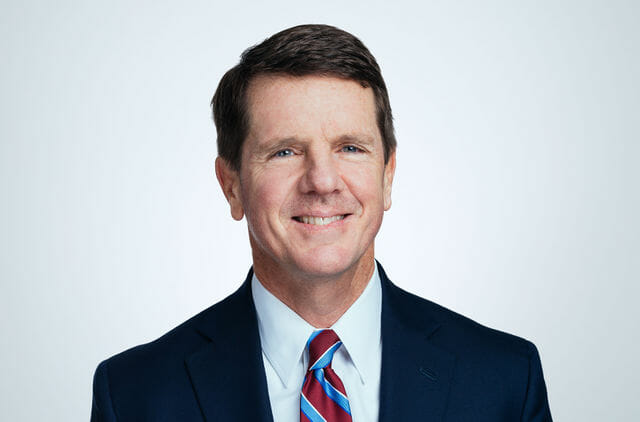Resources
What You Need to Know About Latest Paycheck Protection Program Regulations and Second Draw Loans
As we have reported, the stimulus bill passed by Congress and signed by President Trump late last year enacted major changes to the popular Paycheck Protection Program (PPP). And this week, consistent with that law’s 10-day deadline, the Small Business Administration (SBA) issued new regulations to implement those changes. In addition to the significant tax benefits we covered, here are the most salient PPP developments:
Second Draw PPP Loans
The stimulus bill provided additional funding for “Second Draw PPP Loans.” Borrowers who received an original (First Draw) PPP Loan and who also suffered a significant decline in revenue in 2020 may have access to Second Draw Loans if they:
- Have previously received a First Draw PPP Loan
- Have used, or will use, the full amount of the First Draw PPP Loan
- Employ 300 people or less, except for businesses with a NAICS code beginning with 72 (restaurants) and certain news organizations with more than one location
- Experienced a 25% or more reduction in gross receipts in any quarter in 2020 as compared to 2019
- Borrowers are given the option of calculating this in a quarter-over-quarter basis or simply comparing 2020 with 2019 (with annual tax returns provided as documentation).
Like First Draw PPP Loans, the maximum loan amount for Second Draw PPP Loans is calculated based on 2.5 times the average monthly payroll (in 2019 or 2020). The original cap was $10 million, but Second Draw PPP Loans are capped at $2 million.
By and large, the eligibility rules, definitions, and other requirements of First Draw PPP Loans apply to Second Draw PPP Loans.
Applications for Second Draw PPP Loans will be accepted until March 31, 2021 (or until the money runs out).
Changes to First Draw PPP Loans
The stimulus bill also enacted various changes to the First Draw PPP Loan program (which likewise are applicable to Second Draw PPP Loans):
- Reopening of PPP applications: Borrowers who have not already received a First Draw PPP Loan may apply through March 31, 2021. The application window closed on August 8, 2020.
- Additional payroll costs: In addition to payments for group health insurance, the law adds “payroll costs” amounts paid for group life, disability, vision, or dental insurance.
- Additional permissible expenses: In addition to payroll, mortgage, rent, and utility expenses, PPP borrowers may use PPP loan proceeds for and receive forgiveness for amounts spent on the following:
- Operations expenditures – including software or cloud computing services that facilitate operations, product or service delivery, payroll processing, human resources, sales and billing, or account or tracking of supplies/inventory
- Property damage costs – related to vandalism or looting that occurred during public disturbances in 2020 and not covered by insurance
- Supplier costs – including expenditures for the supply of goods that are necessary to the borrower’s operations and that were either made under a contract in effect before the covered period or, with respect to perishable goods, in effect at any time during the covered period
- Worker protection expenditures – including expenses to adapt business operations or facilities in order to comply with HHS, CDC, OSHA, or similar guidance. Examples of these expenses are: drive through windows, air ventilation or filtration systems, physical barriers (e.g., sneeze guards), expansion of indoor or outdoor business space, onsite or offsite health screening capabilities, and respirators, face masks, gloves, gowns, and other related personal protective equipment.
- Borrower’s choice of covered period: Prior versions of the PPP allowed for either an eight- or 24-week covered period, with the option of applying for forgiveness before the end of the covered period. The new legislation amends the PPP so that the covered period still begins on the date of loan origination and ends on a date that is at least eight weeks, but not more than 24 weeks, after the date of loan origination. In other words, the covered period is now any period between eight and 24 weeks after loan origination, as selected by the borrower.
- SBA has eliminated the “alternative payroll covered period.”
- Simplified forgiveness applications for loans up to $150,000: Borrowers with loans of $150,000 may now receive forgiveness by submitting a one-page certification that provides the number of employees retained, the estimated amount spent on payroll costs, and the total loan amount. Such borrowers are not required to submit any additional documentation, although they must retain records related to loan expenses for three years (four years for employment-related records)
- SBA’s forgiveness audit plan and audit reports: The new law requires the SBA to submit to Congress an “audit plan” detailing the policies and procedures for conducting forgiveness reviews and loan audits and the metrics that the SBA will use to determine which loans will be audited. The SBA also is required to submit monthly reports on forgiveness review and audit activities.
- Calculation of payroll costs: 2021 borrowers may use 2019 or 2020 payroll for purposes of calculating the maximum loan amount (2.5 times monthly payroll).
- No deduction of EIDL advances: EIDL advances are no longer deducted from forgiveness amounts.
- Increases in PPP loan amounts:
- Partnerships that received a PPP loan that did not account for partner compensation may apply for and receive an increased loan amount to take into account partner compensation (assuming, of course, that the partners did not separately receive a PPP loan in their own name).
- Borrowers who returned a PPP loan but are now eligible for a PPP loan may reapply, as well as borrowers who returned part of, or did not accept the full amount of, a PPP loan that was approved.
Expanded Eligibility
Destination marketing organizations, 501(c)(6) nonprofit organizations, and housing cooperatives with fewer than 300 employees are now eligible for PPP loans. News organizations with more than one location also are now eligible as long as the organization does not have more than 500 employees per physical location.
Recap
These changes obviously are significant, both for new borrowers and for those who have yet to apply for forgiveness. The recent guidance won’t be the last, particularly as we prepare for an administration change and new SBA administrator. And certainly keep in mind that the Biden administration very well may scrap these (and other) regulations issued in the waning days of the current administration.
Our Chambliss team continues to monitor legal developments in connection with the COVID-19 pandemic. Please contact Jim Catanzaro, Justin Furrow, or your relationship attorney if you have questions or need additional information.
Visit our COVID-19 Insight Center for our latest legislative and legal updates, articles, and resources.
The material in this publication was created as of the date set forth above and is based on laws, court decisions, administrative rulings, and congressional materials that existed at that time, and should not be construed as legal advice or legal opinions on specific facts. In some cases, the underlying legal information is changing quickly in light of the COVID-19 pandemic. The information in this publication is not intended to create, and the transmission and receipt of it does not constitute, a lawyer-client relationship. Please contact your legal counsel for advice regarding specific situations.


